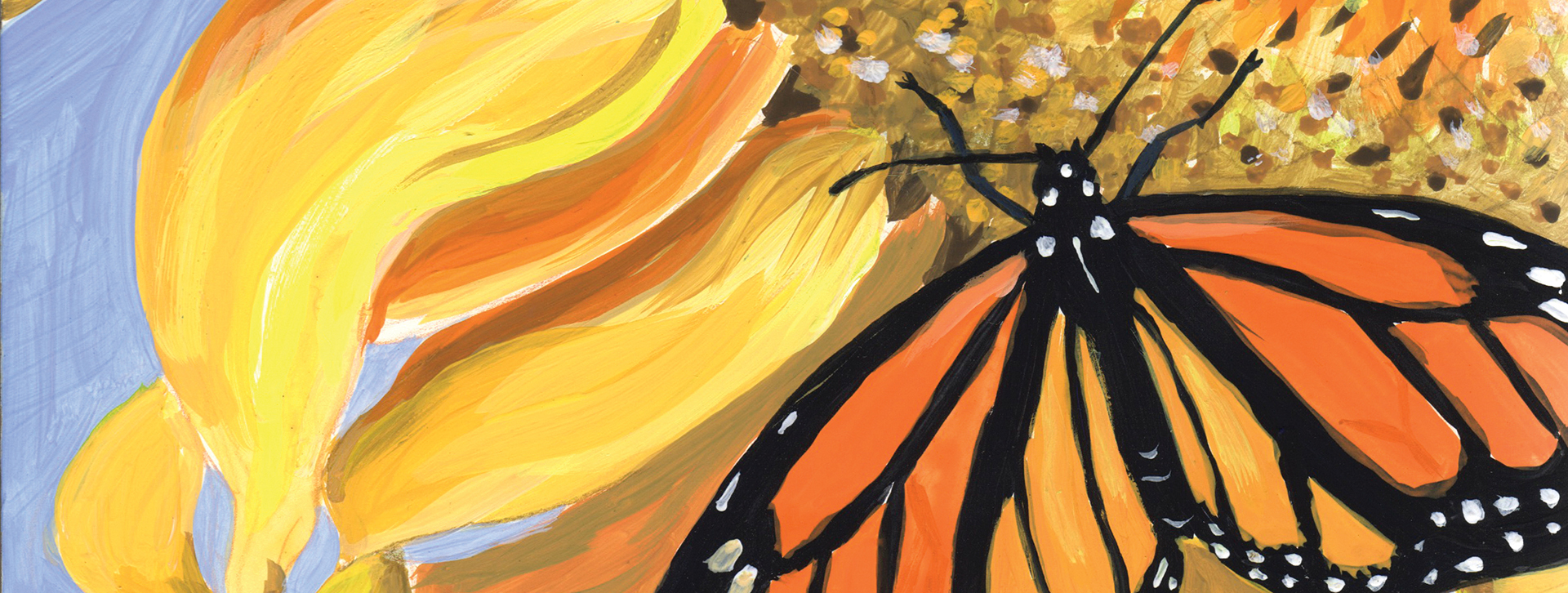ROADS TO AFTER
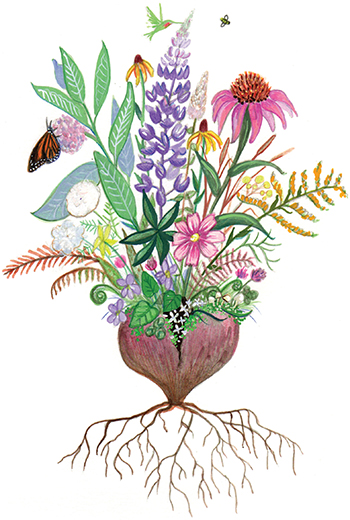
Illustrations within this article are courtesy of Rebekah Lowell M.F.A. ’19 children’s book writing and illustrating
Hollins Alumnae/i Fighting Domestic Abuse in the 21st Century
1 in 3. That’s the number of women who experience sexual or physical violence by an intimate partner at some point in their lives, per the United Nations.
In the past two years, those numbers have spiked dramatically. The American Journal of Emergency Medicine states domestic violence cases worldwide rose 25-33 percent over the past two years.
Early lockdowns meant women were isolated with violent partners, cut off from the resources and networks they needed. In 2020, many social services—shelters and free or cheap safe housing, legal aid services, food banks, childcare centers, rape crisis centers, and more—were forced to scale back services or close temporarily. Today, many have yet to return to pre-pandemic service levels, remaining understaffed and overwhelmed with cases.
The issues continue to be increasingly complex. Rising rent prices—rents rose an average of 14 percent and as high as 40 percent in some cities last year— and an increased demand for now-fewer shelter beds and subsidized apartments have created a safe housing shortage. Courts continue to slog through a case backlog caused by 2020 court closures and limited dockets. Many court systems pivoted to virtual hearings for protective orders, which may be difficult to access for women being controlled by an abusive partner to access. The bump in gun ownership—7.5 million Americans became first-time gun owners from January 2019 through April 2021, per The Annals of Internal Medicine. When there is a gun in a domestic violence situation, the risk of homicide skyrockets 500% (The American Journal of Public Health).
And for many women, the pandemic continues to shift where, when, and how they work, creating financial and personal stress. From summer 2019 until summer 2021, The Pew Research Center charted a drop of nearly 13% in the number of women in the labor force with a high school diploma compared to a five percent decrease for men. For women with a high school diploma, the decline was six percent vs. 1.8 percent, lower but still significant.
At the center of this complex, ever-shifting Venn diagram of issues are Hollins alumnae/i, striving to help women in need navigate their way to safety and a new life.
If you or someone you know is experiencing relationship violence, visit our resources page which includes advice from our experts.
Stay Home, Stay Safe.
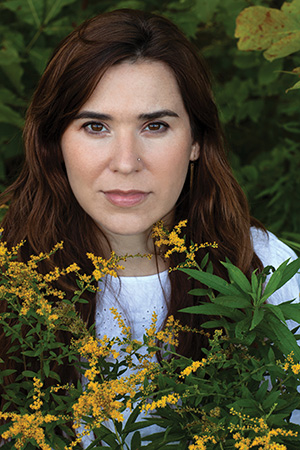
Rebecca Lowell M.F.A. ’19
When Rebekah Lowell M.F.A. ’19 children’s book writing and illustrating saw the March 2020 messaging about the COVID-19 pandemic’s lockdown phase, her first thought was that home isn’t safe for everyone.
She knows. For 10 years, it wasn’t safe for her.
Lowell, an illustrator and author raised and living in small-town Maine, was abused by her husband from the time they were dating until the day she and her two young daughters escaped. She endured a criminal trial where he was convicted of kidnapping, among several other charges, and a civil trial where he lost all parental rights.
The pandemic’s isolation was hard for Lowell. “I stayed home for a decade, and I didn’t want to stay home,” she adds. “He told me that keeping me at home was to keep me safe.” From March 2020 until recently, she social distanced and masked while completing her middle grade novel in verse about a young girl, her sister, and mother who survive abuse. Her book, The Road to After, debuts in May (Nancy Paulsen Books/Penguin Random House). Lowell’s story has a hopeful ending, but that’s not the case for many of the women who were trapped at home with their abusers during the pandemic.
Lowell’s psychological abuse began when she was dating her ex-husband. A “great catch” to her family and friends, he was as controlling of her as he was charming to everyone else.
During their engagement, he forbade her to go out in public without him. “On my wedding day, I knew my life was over, but I didn’t know how to get out of it,” Lowell says. “I didn’t realize it was abuse. He never struck me directly but threw things at me, but abuse is abuse. It starts out small, but it always grows.”
She was not permitted to go to the grocery store or bank. Not to the pediatrician’s or dentist’s office for her children. Not for playdates for her girls. Not to talk to the neighbors who shared a driveway with them. When the family drove anywhere, she had to sit in the backseat in full view of his holstered handgun, which he purposefully slung over the passenger seat.
Forbidden to hold a job or have her own money, she had to hide her art—Lowell has a B.F.A. from the Rhode Island School of Design—because her paintings and sketches did not directly benefit him. She was permitted to submit a design for a duck stamp competition, which her husband begrudgingly mailed, but when she won, she could not attend the ceremony.
The breaking point and yearlong escape plan executed by her parents, an attorney, and state and local law enforcement came when her oldest daughter, then 6, had a cavity. The abuser began Googling “home dentistry” with plans to fix the cavity himself. “We argued and things escalated” she recalls. “That’s when a voice inside me said, ‘Then we’re gone.’”
For four months, she recorded audio of her home life and reached out to Child Protective Services with the burner phone her mother stashed in a secret spot in her parents’ house, which she accessed on the infrequent, chaperoned visits he allowed. (Her parents lived in the same state.)
On March 6, 2013, dozens of people were waiting for her phone call when her husband left for work. Her father, accompanied by state law enforcement and a crew of family and friends, picked them up and drove them to the police station in her parents’ town, where they spent the day while her husband was arrested. She filed for a protective order and began to rebuild a new life. York County, Maine’s domestic violence center, Caring Unlimited, offered transitional housing and hope. (Today, Lowell serves on its board.) Her ex-husband served one-and-a-half years before getting released on an appeal. The felony kidnapping charges were dropped, based on a date discrepancy in the specific sub-law when the crime they were charging occurred, a mistake overlooked by the DA during the trial.
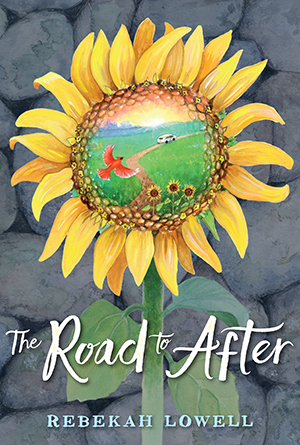 “Honestly, I don’t think it’s over because he is out of jail,” admits Lowell, who has chosen not to move because it’s where her family and support system are. “I share my story because I don’t want to live in fear, but I look over my shoulder all the time.”
“Honestly, I don’t think it’s over because he is out of jail,” admits Lowell, who has chosen not to move because it’s where her family and support system are. “I share my story because I don’t want to live in fear, but I look over my shoulder all the time.”
With her freedom, she rekindled her dream of writing and illustrating children’s books. Lowell found her way to Hollins’ graduate program in children’s book writing and illustrating through the Facebook page of an illustrator she admired. For the summer residency program, she and her daughters moved between Roanoke and Maine for five years.
On average, a victim of domestic abuse tries to leave seven times before leaving permanently. On the day of her escape, she first called her father to tell him not to come, that she had changed her mind and couldn’t go through with the plan. He didn’t listen.
“I tell women who reach out to me that they have a choice,” Rebekah adds. “You don’t have to stay, and you don’t have to leave if you are not ready to. Sometimes people feel ashamed if they stay. I stayed for a decade because I didn’t have the resolve to leave.”
Scarcity of Shelter
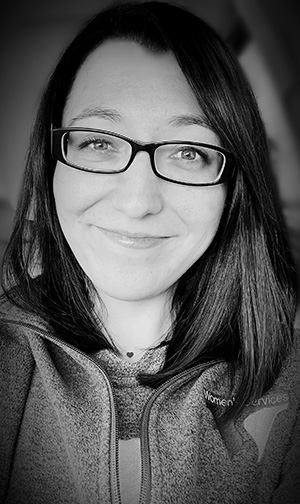
Megan Lenherr ’14
As a certified trauma specialist, Megan Lenherr ’14, NCC, LPA, ITR-CTS has helped many women like Lowell. For the past six years, she’s been a therapist and college advocacy specialist for Women’s Services in Meadville, Pennsylvania. The nonprofit offers comprehensive services for women and children including counseling and housing. Lenherr also coordinates the partnership she forged with nearby Allegheny College to help clients gain access to college.
Until spring 2021, the 18-bed shelter operated by Women’s Services had been operating at half capacity. Shelters serve a critical bridge and frequently are the only option a person has when fleeing a relationship. Staying with family and friends isn’t always safe since the abuser knows those locations. Often, the victim lacks a support network, so the shelter becomes a safe harbor in many ways.
“We were still open, but a lot of people were not willing to come to a shelter and be in public during the pandemic [for health reasons], and we weren’t providing all of our services,” explains Lenherr. Packed ERs with COVID-19 patients meant that Lenherr and her colleagues were unable to see clients who were in the ER for sexual or domestic violence. “We could talk with clients on the phone, but they weren’t receiving the services they would’ve had we been able to go to the ER,” she explains.
Like many health care providers, she pivoted to remote counseling, but going online is not that simple for women experiencing abuse and isolated with their abuser, especially women who are underserved and lack access to technology.
“Women in domestic violence situations don’t have access to safely communicate online,” she says. “I saw a decrease in the numbers of people we served because it wasn’t safe for them to receive services.”
“It took awhile for people to come out of hiding once quarantine was lifted,” Lenherr explains. She’s continued telehealth services while seeing an uptick of in-person visits, but the biggest challenge, she says, is housing: “For us, domestic violence directly correlates with homelessness. Because so many women weren’t coming during the pandemic, and now are trying to come at once, we can’t handle the influx.”
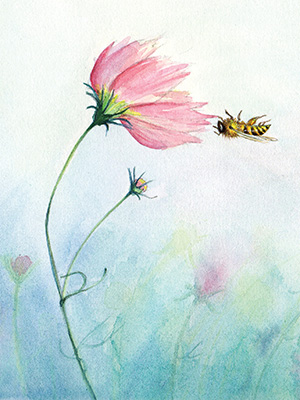 Typically, Women’s Services operates a 30-day shelter with a goal of transitioning women into public or subsidized housing. “Now we can’t find housing for three to six months for our clients,” she adds. “There are wait lists for months. Women are stuck with nowhere to go.”
Typically, Women’s Services operates a 30-day shelter with a goal of transitioning women into public or subsidized housing. “Now we can’t find housing for three to six months for our clients,” she adds. “There are wait lists for months. Women are stuck with nowhere to go.”
Her biggest concern? “We’re just not going to catch up,” Lenherr explains. “Because of the system backup, there are going to be a lot of women who are not going to get services.”
A survivor herself of sexual trauma, Lenherr chooses to embrace the hope she sees in her clients and colleagues. “The resiliency of the people in this field is amazing,” she says. “I’ve seen my coworkers who have been at the shelter 24/7 since March 2020 and are still passionate. People are not giving up. They are still dedicated to changing lives.”
“Everybody Suffers”
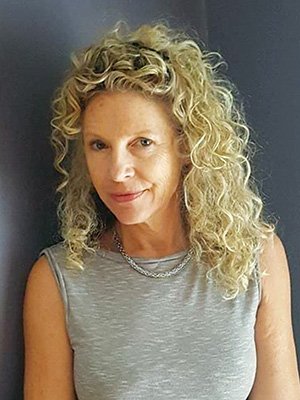
Elizabeth Barbour ’78, M.A. ’98
Elizabeth Barbour ’78, M.A. ’98 in English and creative writing watched the pandemic shut doors for many women who would’ve come to the Legal Aid Society in Roanoke, where Barbour is a domestic violence attorney. “Many legal aids do not report increased caseloads at this time, but we all realize the problems have been worse with the pandemic,” says Barbour. “Victims have few roads to leave relationships with the doors that have shut—doors to jobs, doors to safe-haven friends and relatives.”
There are Legal Aid Society offices across the U.S. serving those unable to afford legal representation. Barbour and her colleagues in Roanoke assist victims of domestic violence with obtaining protective orders, uncontested divorces, and custody cases. While she did not experience an uptick in women seeking protective orders from abusive partners, she is witnessing a trend of women emerging from the pandemic ready to go through with a divorce: “I really sense that the [past two years] have given them space to unpack what they’ve gone through. I didn’t see this before March 2020.”
Another by-product, she says, is that she and her colleagues have had time for more reflection as well. “Those of us in the trenches have been able to read up on patterns and reasons for domestic violence and concentrate on the power of partnering with other agencies that assist victims and developing methods to increase outreach to raise awareness,” adds Barbour, who enrolled in law school in 2017 after careers as a hand model in print and TV and as a model with the Ford Agency, as a writer, and as a residential real estate developer in Telluride, Colorado.
When asked about the downstream effect of the pandemic and domestic violence, Barbour doesn’t hesitate. “It’s going to ripple through the children,” she says. “With domestic violence, everybody suffers, even the abuser. Children keep a lot of people in lousy relationships, and so does lack of money.”
Good wrap-around services—legal services, counseling, a victim advocate team, housing, childcare, etc.—are essential, Barbour adds. “I’ve seen victims really prosper when a constellation of services are meeting their needs, but the pandemic has hindered national training [for service providers].”
She says women’s empowerment is the missing piece for most of her clients, almost all of whom are female. “They’re not getting the memo about claiming their own power and taking care of themselves,” Barbour says. “By the time they get to me, though, they are ready to leave their situation and ready for a way out. It’s a real privilege to get to be the person who opens a series of doors that gets them out.”
“We Can Unlearn It”
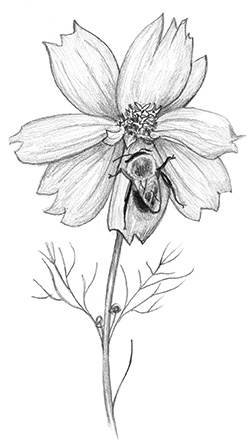 “Domestic violence has always been a pandemic,” says Larissa Sutherland ’96, an art teacher and administrator turned domestic victim advocate and educator. “For me it’s always been in the context of gender equality. It’s clear to me how many systems were designed to keep women as second-class citizens.”
“Domestic violence has always been a pandemic,” says Larissa Sutherland ’96, an art teacher and administrator turned domestic victim advocate and educator. “For me it’s always been in the context of gender equality. It’s clear to me how many systems were designed to keep women as second-class citizens.”
For the past 11 years, Sutherland has worked to understand those systems, beginning with the root behaviors of battering. She leads education programs for victims and families, runs court-ordered men’s batterer intervention groups, and has served as a domestic violence victim advocate for the U.S. Navy since 2016. Prior, she worked in advocacy and education for domestic abuse, rape, child abuse, and more for nonprofit domestic violence and sexual assault centers.
“It all comes down to learned behavior, which means that we can unlearn it,” says Sutherland, who began her career as an elementary school art teacher and encountered children who were victims of domestic abuse. “The reality is that a lot of people who grew up in abusive households have not dealt with childhood trauma.”
Throughout the pandemic, Sutherland continued to lead a court-ordered evening class for domestic abuse offenders. The pivot to a remote class still offers a front-row seat to the shame that domestic violence creates for the abused and the abuser. She witnessed how the pandemic cut off points of intervention and exit for victims, “moving people into the realm where they didn’t have access to church or larger family,” Sutherland adds.
The impact, she believes, is long-term, from the court backlog to the disconnect that people can experience in virtual support groups. But Sutherland’s biggest concern and challenge are how the pandemic has altered her ability to find services and safety nets for her clients.
“The Great Resignation has severed my professional network,” she explains. “All of the systems are stretched thin because staffing issues are so difficult.” Like all social service providers, Sutherland relies on an intricate, trusted network to find the resources she needs to help victims and their families. Connections lost often translate to lost services.
A few months before the pandemic, Sutherland founded the Equipoise Center on Domestic Violence (enddv.org), a consortium of educators and advocates. Her goal is to connect the many dots across the complexities of domestic violence and to educate others on the barriers for victims. “But the pandemic took the wind out of my sails,” she says. “I’ve done some virtual training through Equipoise, but I created it to provide accessible, affordable, in-person training.”
Like Lenherr, hope keeps her going. “Working in the weeds of people’s lives has given me a unique point of view where systems are failing, but if I didn’t have hope in this work, I couldn’t do it.”
Hope is also what she tries to fan in those she helps. “Hope is the most important thing that victims of domestic violence have to hold on to—it will be hard to leave, but it will be worth it,” she adds.
Youth and Early Warning Signs
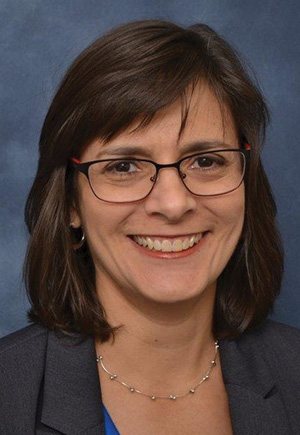
Diane Hall ’88
Diane Hall ’88, senior scientist for policy and strategy at the Centers for Disease Control and Prevention (CDC), and her colleagues are concerned about a pandemic rise in child abuse because of the prolonged remote learning phase. “Kids [were] home, and parents are home and stressed,” she explains. “Teachers are usually the first line of defense to identify abuse, which was lost during remote learning.”
Before Hall was tapped to work directly on the CDC’s pandemic response, she spent 13 years at the CDC on preventing relationship violence in youth. She’s authored online violence education tools for schools, based in part on her Ph.D. dissertation at the University of Pennsylvania, for which she interviewed dozens of teenagers about their perceptions of what constitutes violence.
“There are not a lot of teen examples of healthy relationships,” says Hall, who is on the Hollins Alumnae Board. “When I asked them about jealousy, [many] saw it as a sign of love.” The school counselors she met with said that they rarely broke up fights in school between boyfriends and girlfriends, calling it “a dating thing,” but they would break up same-sex fights.
“One of the things we’ve tried to emphasize in CDC curriculum is the importance of school policy and recognizing early warning signs,” she explains. When couples break up, teenagers or adults, that is when there is the greatest risk, Hall notes.
One of her concerns as adolescents, teens, and young people return to a pre-pandemic “normal” are the norms they have lost during remote learning and social distancing. Hall says that the developmental gap in learning to navigate and practice healthy relationships in person will have short-, middle-, and long-term effects—worrisome to behavioral scientists and parents alike.
One Love
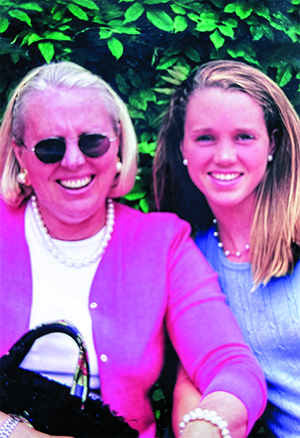
Sharon and Yeardley Love
Like many people, Sharon Donnelly Love ’71 had a stereotype of what domestic violence looked like. “I thought it was a housewife with no way to support herself and was dependent on her husband,” she says.
May 3, 2010, changed that. In the early morning hours, a policeman knocked on her door in Baltimore, Maryland, to tell her that her daughter, Yeardley Love, was dead, beaten to death by Yeardley’s ex-boyfriend.
Yeardley was a standout student-athlete on the University of Virginia women’s lacrosse team with three weeks until graduation. Her murder made headlines and transformed her mother into an international advocate for education and awareness of relationship violence for people ages 16-24.
In 2012, Love and her daughter Lexie founded the One Love Foundation—Yeardley’s uniform number was One—to educate young people about relationship violence and to help them recognize harmful behaviors in person and online. Today, 1.6 million people have participated in a free One Love Foundation-led workshop. Over 100 million people have viewed One Love’s educational content, including Escalation, a film about relationship violence created to engender discussions in schools and colleges that has been viewed around the world. The foundation’s myPlan app guides users through making safety decisions about their relationship or someone they care about, and the One Love Film Fest screens student-produced films around the theme of relationship violence awareness and prevention.
In March 2020, One Love was able to quickly shift online because of its prior focus on remote training for volunteer educators. “We saw an upswing in abuse for our age group [16-24 years],” Love explains.
Leading the charge for relationship violence prevention didn’t happen overnight for Love. In the weeks following Yeardley’s death and the arrest of her abuser, Love struggled to connect her vision of domestic violence with her daughter’s death. “Before she died, I thought that she might get hurt playing lacrosse or driving home to Baltimore from Virginia,” she says. “But I never thought that this would happen to her.”
Yeardley’s family and friends had been aware of the tumultuous relationship and knew his behavior escalated when Yeardley broke up with him shortly before her murder, but Love had no idea that this was such a tenuous time for people in abusive relationships. Young women ages 16-24 are at three times greater risk of being involved in a violent relationship than older women, she explains.
“[After her death] people told us that we should do something, but I didn’t want to touch the subject,” Love says. Instead, the family focused on funding a lacrosse team in inner-city Baltimore. [Love’s husband and Yeardley’s father died of cancer prior to Yeardley’s murder.] By the time the trial started in 2012, Love and Lexie were ready to focus on the issue of relationship violence in young people.
A week after Yeardley’s murderer was convicted on second-degree and felony murder charges, a donor stepped forward with $1 million and fast-tracked the One Love Foundation (joinonelove.org). Yeardley, who would have been 35 this summer and dreamed of becoming a lawyer, had a joy for helping others. That spirit, her mother believes, has guided the One Love Foundation since its inception. “Yeardley had her hand in all of it,” Love says. “It was a choice to get out of bed and not wallow. It gave us a purpose.
“If I had a crystal ball, I never would have thought we’d be where we are today,” says Love, who was named a 2021 AARP Purpose Prize award recipient and received $5,000 for the One Love Foundation in recognition of her leadership. “There was a big vacancy in this area. We said if we could save just one life, it would be worth it.”

